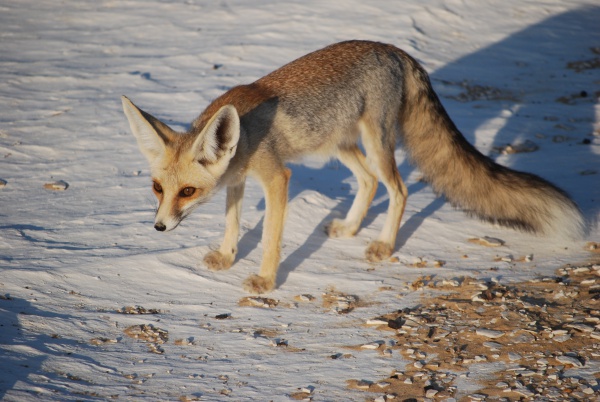Facts About Rüppell's fox
Rüppell's fox, often referred to as Rüppell’s sand fox, is a captivating small fox that flourishes in the deserts and semi-desert regions of North Africa, the Middle East, and southwestern Asia. Named after the German naturalist Eduard Rüppell, this fox has been listed as "Least Concern" on the IUCN Red List since 2008, indicating that it is not currently at risk of extinction.
This diminutive fox is distinguished by its sandy-colored coat and distinctive white markings. It is exceptionally adapted to desert life, boasting fur on its feet to protect against scorching sand and large ears that aid in dissipating heat.
Rüppell's fox leads a monogamous lifestyle and is primarily active during dawn, dusk, or night, seeking refuge in cool dens during the intense heat of the day. They communicate through a variety of vocalizations and mark their territories with urine. As omnivores, their diet is diverse, comprising insects, small mammals, lizards, birds, plants, and even human refuse when accessible.
These foxes mate in November, with the females giving birth to litters of up to six kits after a gestation period of about 52-53 days. The kits develop rapidly, becoming independent around four months of age.
Rüppell's fox is found across North Africa, the Arabian Peninsula, and parts of southwestern Asia. They favor habitats such as sandy or rocky deserts, semiarid steppes, and sparse scrublands. Their only natural predators are the steppe eagle and the eagle-owl.
Interestingly, Rüppell's fox has even been commemorated on postage stamps by the Libyan General Posts and Telecommunications Company in collaboration with the World Wide Fund for Nature. Some experts recognize up to five different subspecies of this fox, underscoring its diversity across its range.

 Sudan
Sudan